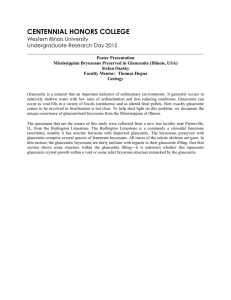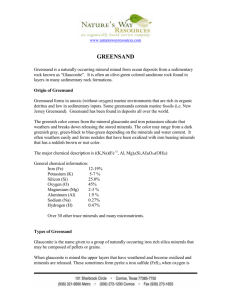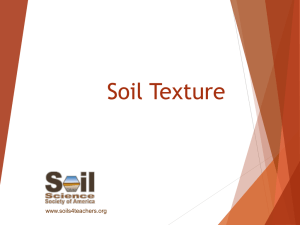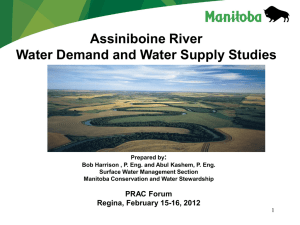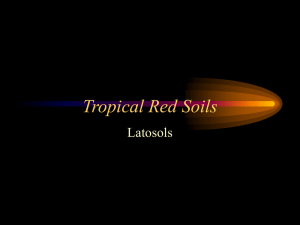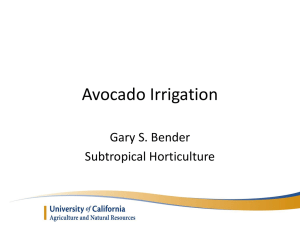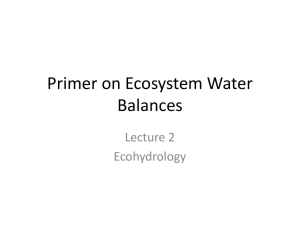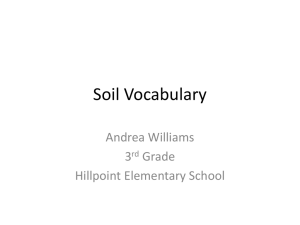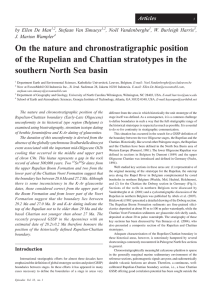Glauconite A Peculiar Soil Constituent
advertisement
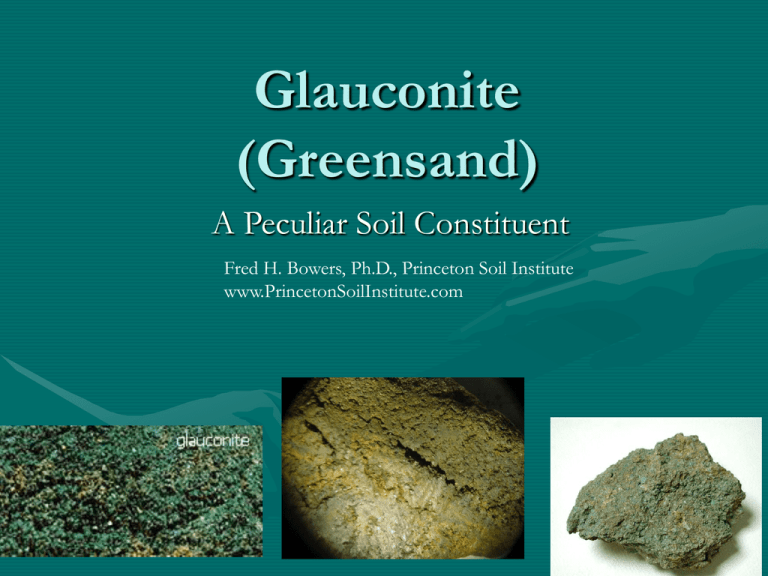
Glauconite (Greensand) A Peculiar Soil Constituent Fred H. Bowers, Ph.D., Princeton Soil Institute www.PrincetonSoilInstitute.com What is Glauconite? • Called Greensand Marl • Sand-size particles or pellets (See figures below) • Normal sand sized particles consist of discrete minerals such as quartz, orthoclase, calcite, etc. • Glauconite sand-size particles are made up of relatively stable pellets of claysize mica (Clay). • The pellets generally range from about 0.5 to 0.05 mm in diameter with some being as much as 4 mm cemented with clay-size siderite. • Produces good structure when undisturbed Distribution • New Jersey has some 325,000 acres of greensand (glauconite-bearing) soils Water and Nutrient Characteristics Water Holding Character Table 1. Quantity of Moisture Retained in Various Soils and Greensand Deposits at Two Tension Levels (unpublished data of Prof. N. A. Willits). Soil 6 Atm Tension % Moisture 15 Atm Tension % Moisture Sassafras 2.3 1.3 Hornerstown 20 16.4 NUTRIENTS: Contains up to about 7-8% potash (K2O) and, in some instances, a little more (Hower, l.c.). Effects of Glauconite on Septic System Functionality • Tricky Evaluations (due to texture by hand) • Mottling • Enhanced due to moisture holding • Oxidation of reduced iron on peds • Construction • Smearing when constructing with backhoe • Do it by hand • Clogging and chemical changes • Susceptible to deflocculation from salts from water softener backwash Soils of Glauconite Areas • • • • • • Freehold Collington Colts Neck Adelphia Marlton Kresson How to Ensure a Functioning Septic System in Glauconite • Standard septic tank fields – Mottling can suggest SHWT but not be accurate. Look at soil series. Look at associated vegetation; Obtain a soil scientist when in doubt – Design disposal field as if it were clay (K class K0 for underdrain requirements) – Do not smear or alter the glauconite. Dig trenches by hand. • Drip irrigation into the upper soil horizons that avoid flooding • Lay down a layer of ASTM 33 sand on the glauconite to form the biomat and form transition to clay • Avoid using water softeners
